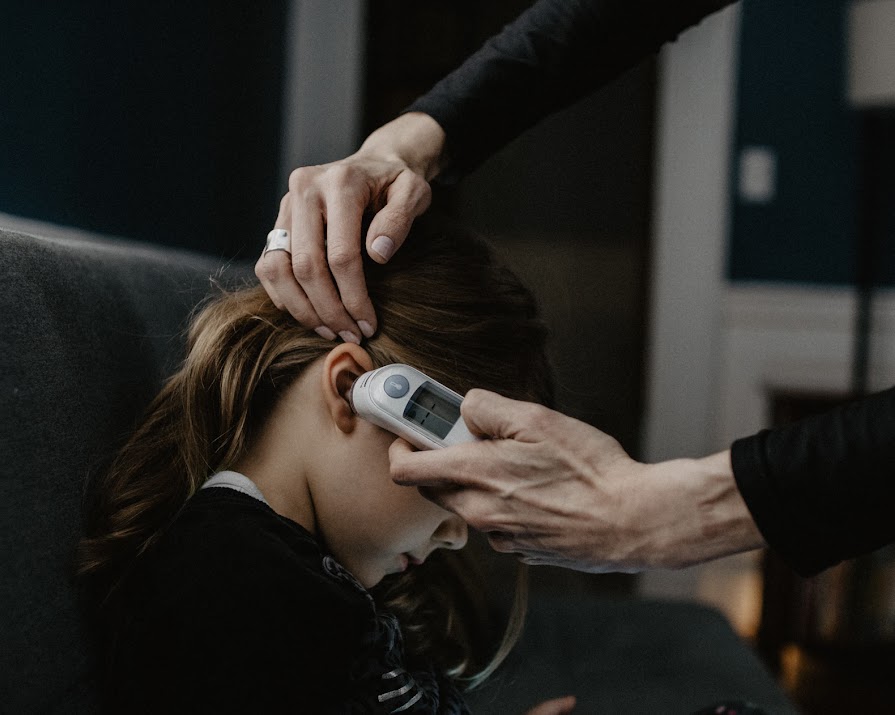
Is this the reason so many of us were sick over the Christmas break?
By Amanda Cassidy
07th Jan 2023
07th Jan 2023
XBB.1.5 is now officially one of the fastest-spreading coronavirus subvariant. As Irish hospital numbers swell and winter virus cocktail stews, how worried should we be?
Irish schools have been sent a circular from the HSE warning parents to keep children home from school and childcare facilities if they are displaying new symptoms of illness. It says “we have seen a very significant increase in the usual winter viral infections. This includes an increase in flue, RSV and now Covid-19. This is because we are mixing together more”
The memo comes as the Health Service Executive today said it does not believe that the number of flu cases has peaked yet.
Pressure on the hospital network remains high with a surge in the number of patients seeking treatment, many of them for respiratory infections.
Worse
Following the worst week on record for hospital overcrowding, Minister for Health Stephen Donnelly said the focus this week will be on treating and discharging patients.
There is currently “significant pressure” on healthcare resources, according to the CMO, particularly hospital emergency departments and GP services.
We have come a long way since March 2020 – back when there were no vaccines or drugs to combat the coronavirus.
Now, armed with vaccine immunity and past infections, we are not at all as vulnerable to the worst of Covid 19’s effects.
Wary
But over the past few weeks, virologists have been tracking XBB.1.5 – an offshoot of Omicron which has seen cases rise dramatically – in fact, the quickest of any of the previous variants.
No evidence so far suggests that it is inherently more severe than its predecessors, but with a recent rise in hospitalisations for respiratory problems, and a worrying swell of Covid numbers across China – it’s no wonder scientists are tracking this one with such vigour.
The concern with this subvariant is that it is quite a crafty doger of antibodies that can grip tightly to the surface of our cells.
The World Health Organization’s senior epidemiologist Maria Van Kerkhove said XBB.1.5 is the most transmissible Omicron sub-variant that has been detected so far. It spreads rapidly because of the mutations it contains, allowing it to adhere to cells and replicate easily.
Our concern is how transmissible it is,” Van Kerkhove explained earlier this week.
Data
XBB and XBB.1.5 were estimated to account for 44.1% of COVID-19 cases in the United States. It has also been detected in 28 other countries worldwide.
The WHO says that while it saw no indication that its severity had changed but that increased transmissibility is always a concern.
“We do expect further waves of infection around the world, but that doesn’t have to translate into further waves of death because our countermeasures continue to work,” said Van Kerkhove, referring to vaccines and treatments.
But it’s not all doom and gloom. In fact, this is exactly what we might expect of a virus such as this – especially this time of the year.
Versions of the virus have evolved to behave exactly as we are seeing. It tries to elude a subset of our immune defences. It’s the classic host-pathogen arms race: Viruses infect us; our bodies, hoping to avoid a similarly severe reinfection, build up defenses, goading the invader into modifying its features so it can infiltrate us anew.
Emma Hofcroft, a molecular epidemiologist at the University of Bern, in Switzerland, told The Atlantic, “it’s hard to imagine that anything we’ve been seeing in the last few months would really cause a rush to do a vaccine update,” or anything else similarly extreme. “We don’t make a new flu vaccine every time we see a new variant, and we see those all through the year.”
The WHO’s Technical Advisory Group on Virus Evolution is doing a risk assessment on the subvariant. Van Kerkhove said it hoped to publish that in the next few days.
Action
Meanwhile, the tripple whammy of winter bugs has seen the Irish Nurses and Midwives Organisation to consult with its members on a campaign of industrial action.
Nurses say the overcrowding was avoidable and they will not endure this level of danger in their workplace.
The number of patients waiting on trolleys in emergency departments last night was 535.























